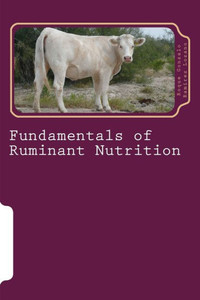Grazing is the most common form of use of forage grasses. Plants are chosen for their abundance, by supporting various defoliation periods during grazing, trampling resistance and response to fertilizer use and its palatability, availability and nutritional quality. However, several problems such as loss of material by trampling, fecal contamination, selective grazing and early maturity in relation to the number of animals that graze; thus, increasing the proportion of stems that becomes less digestive the pastures. In intensive and semi-intensive farms, subdivision controls by permanent and temporary fences are required and they may be electrified. Grazing requires less labor and takes less time than other methods of feeding. The animal chooses their diet both in quality and quantity and nutrients are returned to the soil through the feces.
- | Author: Roque G. Ra'irez Lozano, Ph.d., Irez Lozano Ph D Dr Roque G Ra
- | Publisher: CreateSpace Independent Publishing Platform
- | Publication Date: Aug 16, 2018
- | Number of Pages: 216 pages
- | Language: English
- | Binding: Paperback
- | ISBN-10: 1725817098
- | ISBN-13: 9781725817098






